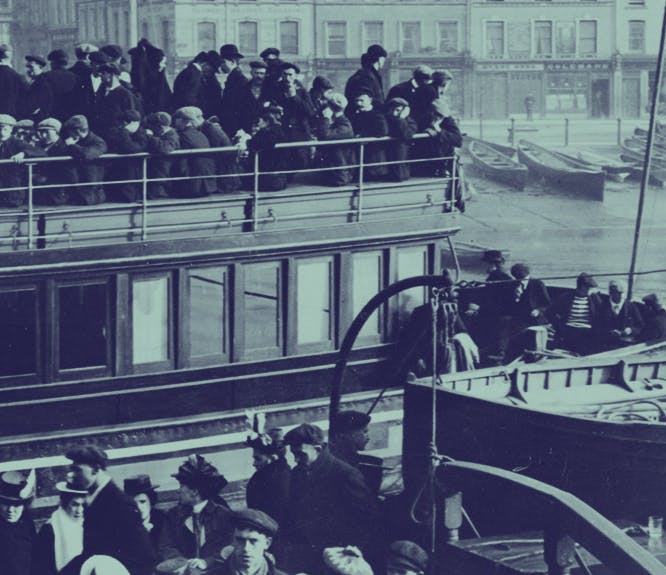From Ulster to the US: Irish migration patterns and their impact on Irish genealogy
5-6 minute read
By Brian Donovan | February 26, 2024
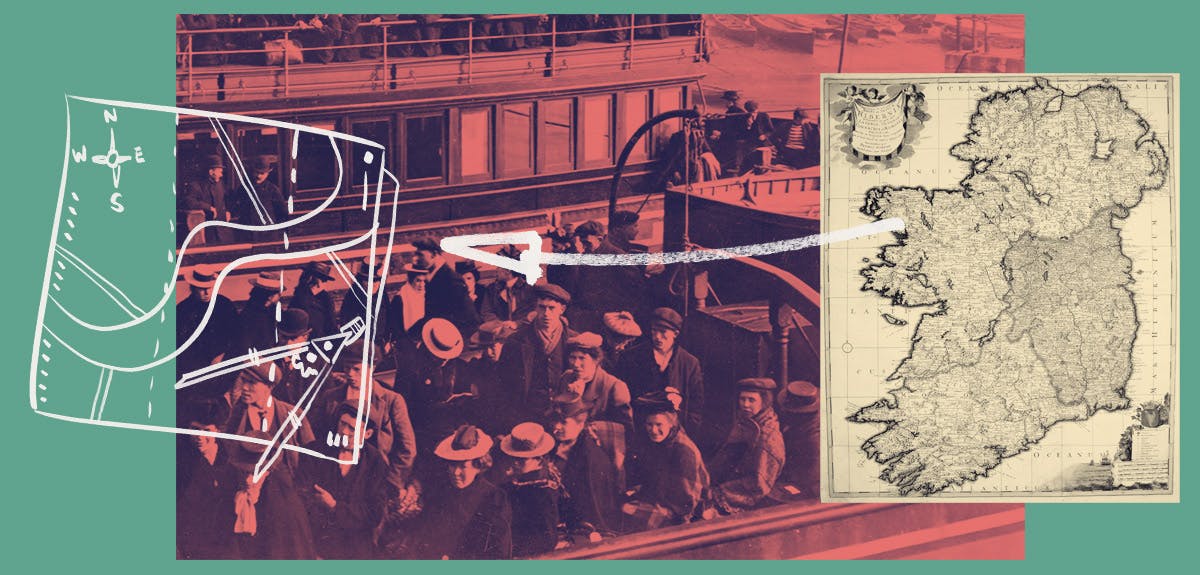
When researching Irish genealogy, it's crucial to understand the historical context. Brian Donovan takes a deep dive into the movement of Irish people, from the Norman Conquest to the present day.
What makes the Irish especially interesting is that more people of Irish heritage live outside of Ireland than within Ireland – by quite a long stretch. While there are seven million people on the island (5.1 million in the Republic and 1.9 million in Northern Ireland), more than 80 million claim Irish ancestry elsewhere.
This is unprecedented compared to other European populations. There are 75 million people with German ancestry outside of Germany and 84 million inside Germany. There are 100 million people with Italian ancestry outside of Italy, and 59 million inside of the country. With a ratio of 1:6, even the huge Spanish diaspora doesn’t come close to the scattered nature of the Irish diaspora.
We can only understand this phenomenon by looking at its historical roots. Why have millions of Irish people left the island, and where did they go? What were the wider factors that contributed to their movement across the globe?
Irish migration in the Medieval period (c. 500- 1500 AD)
In the early medieval period, Ireland was the centre of two pursuits. These were:
- The expansion of Christianity across Europe
- Irish Kingdom expansion into Scotland and Western Britain
Both projects entailed Irish immigration overseas, across the European continent and into Scotland and modern-day England and Wales.
There was also significant immigration into Ireland over this period. Vikings – Scandinavian raiders, traders and settlers – also made a marked impact on the Irish population, particularly on the eastern and southern coast. Vikings brought with them allies, servants and slaves from across Britain, especially the Hebrides in Scotland.
They founded many towns. It is claimed that Dublin became the busiest slave market in northern Europe in the 10th century, which carried many Irish out to other parts of the Viking domains from Greenland to Russia.
The Anglo-Norman conquest of Ireland in the years after 1169 also brought a significant influx of Anglo-Saxon, Flemish and Welsh groups under their Norman leaders. These immigrants settled in large numbers in the east and south of Ireland.
Scottish mercenary warriors (the gallowglass and redshanks) also came to bolster the forces of Irish lordships in their confrontations with their rivals, be they Anglo-Norman or Irish.
Irish history in the early modern period (c. 1500-1800)
Over the early modern period, Ireland experienced three conquests – the Tudor, the Cromwellian and the Williamite. There were several forced population transfers, to Sweden, the Caribbean, and from the east to the west of Ireland.
These combined factors drove outward migration between 1500 and 1700, with around 200,000 people leaving the country either forcibly or to escape dire circumstances. Alongside this migration, huge swathes of Ireland’s land were confiscated and handed to English and Scottish landlords. Exemplified by Ulster, these landlords were often required to rent their land to British tenants.
Protestant settlers in Ireland
More than 200,000 mostly Presbyterian Scottish settlers arrived in Ireland between 1610 and 1700, concentrated in the north-east of Ulster. They were followed by other Protestant migrants, including roughly 5,000 French Huguenots after 1685 and 3,000 German Palatines from 1709.
While the authorities thought that settling more Protestants was desirable in Ireland, they were generally not Episcopalians, like the established Church of Ireland.
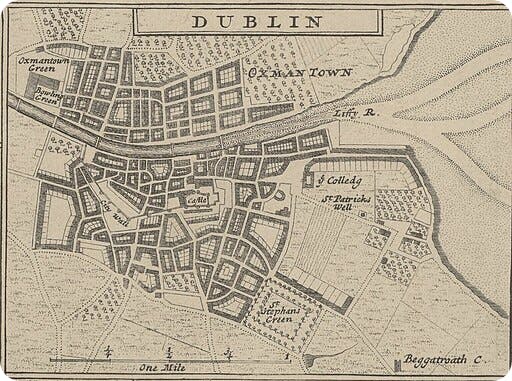
A map of Dublin in 1714.
They were often subject to discrimination in land ownership and occupations and were precluded from public office and the right to vote. This prompted many to leave for the less restrictive environment of North America, where they are generally remembered as the Scots Irish.
From Navan to New York
More Irish emigrants came to America from the south and east of the country than Ulster at this time. They tended to be English speakers and had conformed to the state religion, but they were of mixed backgrounds.
They quickly merged into the mainstream colonial American community and are far less visible to genealogists researching today. This should not be a surprise, as at this time Dublin was the second key city of the fast-growing British Empire.
There were plenty of opportunities available in a variety of countries and occupations, especially for those who spoke English and had enough money to make the journey. By 1800, around one million Irish people had travelled abroad.
Irish immigration in the 19th century
Irish people found many opportunities available to them within the British Army. Throughout the 19th century, as the armies of the British Empire conquered countries across Asia and Africa, there were always Irish men in their ranks.
Interestingly, the British also favoured Irish Catholic churchmen being installed in countries that were the former colonial possessions of the French, Portuguese and Spanish. This religious route was another path taken by many Irish immigrants in this period.
The main driver of migration in this period was economic. After the Act of the Union in 1800 relocated much of Ireland’s wealth to London, the lack of industrial investment meant there was a shortage of jobs. The growing Irish population migrated in large numbers to the mills, factories and mines in England and Wales, or further afield in North and South America.
The impact of the Irish Famine (1845-52)
Over seven years, more than one million people died because of the tragic Irish famine. A further two million people left the country altogether, travelling mostly to North America and Britain.
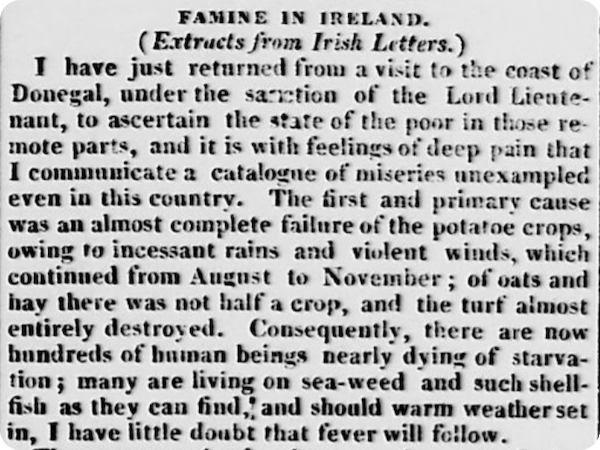
A letter in the Leicester Journal reporting on the Irish famine. Read in full.
By 1855, over 33% of the Irish population was dead or had migrated. In the modern day, there are still fewer people on the island than there were in 1841. The impact of the famine was thus massive. It transformed the society, politics and culture of the country.
Those who left boarded crowded state-sponsored ships travelling to Liverpool or Canada. Others who had the money (or who were sponsored by their landlord) bought tickets to America. By the early 1850s, Toronto and New York were completely overrun with arrivals from Ireland.
Find out if your ancestors experienced the Irish famine.
What happened after the 1850s?
Thereafter, the country went through a steady population decline. More and more Irish men, women and children chose to find a better life abroad. The number of potential destinations grew, as Britain encouraged people to migrate to Australia or Canada.
Due to the steep price of the journey, Irish migration to the US often took the form of ‘chain migration’. A family would gather enough money to pay for the passage of the eldest son or daughter, who would raise money to send home to pay for their sibling, who would do the same. The last would pay for the parents, assuming they were still alive.
While the United States was a favoured destination, 100,000 Irish people also migrated to Argentina, Colombia, Chile and elsewhere in South America. Many more chose to migrate to Mexico, as evidenced by the existence of the Batallón de San Patricio – a largely Irish battalion in the Mexican Army that fought against the US between 1846 and 1848.
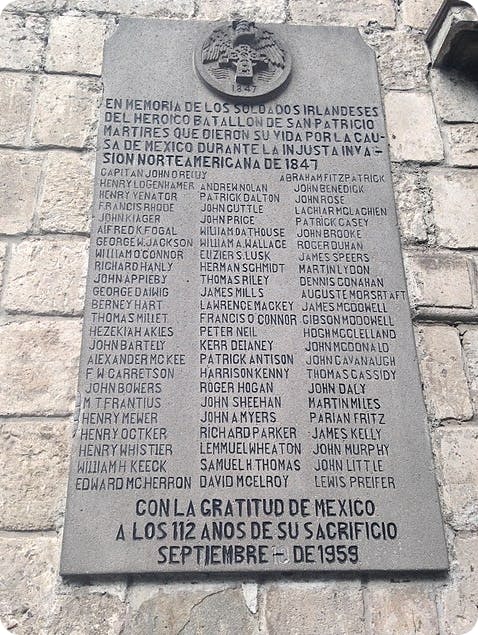
Memorial to the Batallón de San Patricio. Image credit: Raulchm, CC BY-SA 4.0 via Wikimedia Commons.
Britain re-emerged as the favoured destination in the early 20th century, when US immigration rules tightened. Until the 1990s, most Irish immigrants chose either Britain or the United States as their new home.
Around six million Irish people emigrated from 1855 to 1920 alone, with another 500,000 moving in the 1950s, often suffering great hardship and discrimination along the course of their journey.
Tracing Irish ancestry with Findmypast
With more Irish family records than any other website, Findmypast gives you the best chance of overcoming the obstacles faced in Irish genealogical research. With our handy family tree builder to help you, finding out more about your Irish roots is easier than ever.
If you’ve hit a stumbling block with your Irish research, consult the advice of our experts. With topics ranging from Irish surnames to searching Irish newspapers, we have a wealth of handy blogs to help you.
Related articles recommended for you
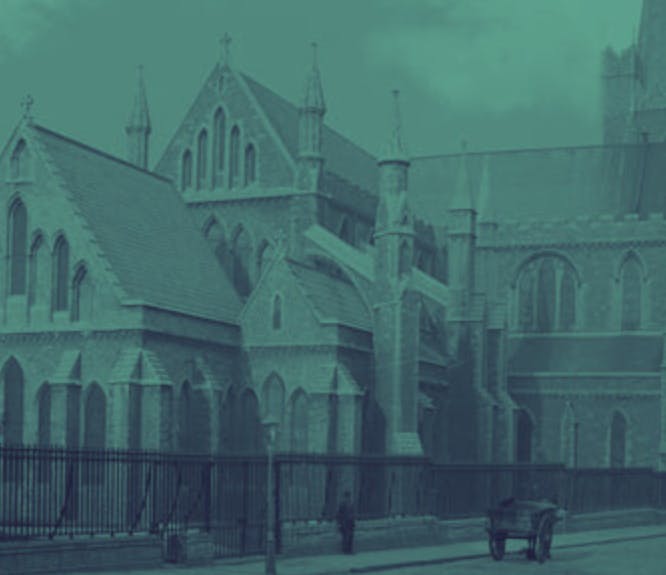
Irish family history and minority religions in Ireland
History Hub
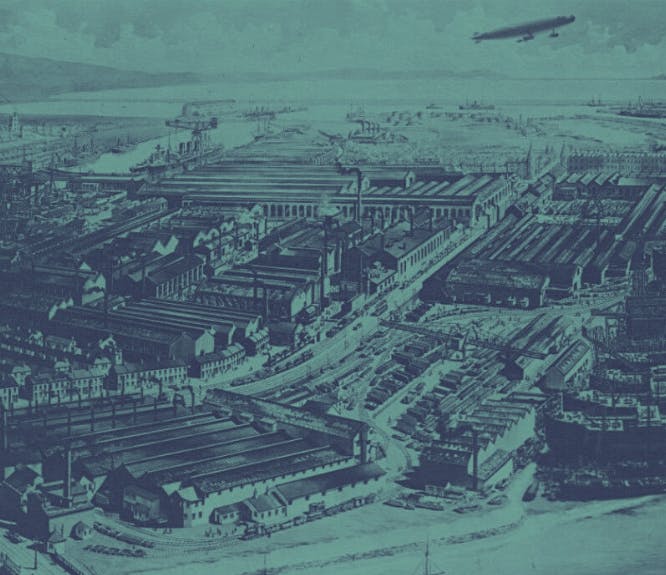
The history of the Barrow-in-Furness Shipyard
History Hub

Catholic family history: A genealogist's guide to the Latin language
Help Hub
